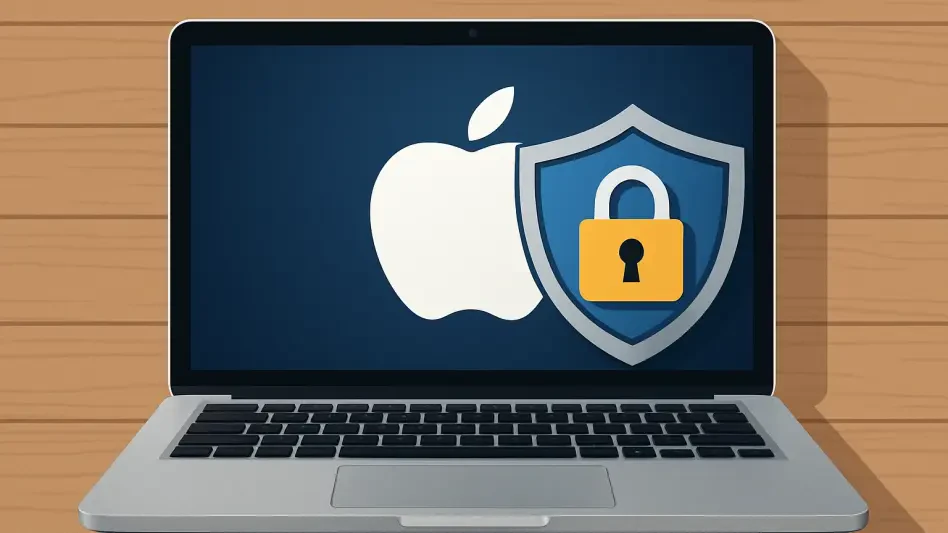What happens when a tiny flaw in your device could open the door to a full-scale cyber invasion? In an era where smartphones and laptops hold the keys to personal and professional lives, Apple has rolled out a sweeping set of security updates for iOS, iPadOS, and macOS, fortifying its ecosystem against dozens of lurking vulnerabilities. Released amidst the fanfare of new iPhone unveilings, these patches are more than just routine maintenance—they’re a vital defense for millions of users worldwide.
Why These Updates Are Critical Now
The significance of this update cycle cannot be overstated. With cybercrime racking up damages in the billions annually, according to industry estimates, every unpatched flaw represents a potential catastrophe. Apple’s latest releases—iOS 26, iPadOS 26, and macOS 26—address a staggering 27 vulnerabilities in iOS and iPadOS, and 77 in macOS, alongside fixes for Safari, watchOS, visionOS, and Xcode. This isn’t just about numbers; it’s about safeguarding an ecosystem that users rely on for everything from banking to personal communication.
Beyond the raw data, the timing of these updates speaks volumes. While no active exploitation of these specific flaws has been reported, the sheer volume of patches signals Apple’s proactive stance in a landscape where attackers grow more sophisticated by the day. For users, this is a reminder that staying updated isn’t optional—it’s a fundamental step in protecting sensitive information from potential breaches.
The Rising Stakes of Digital Security
In today’s hyper-connected world, devices are no longer just tools; they’re extensions of identity and security. From controlling smart home systems to storing confidential work documents, the risks tied to a single vulnerability have never been higher. Apple, often viewed as a bastion of safety, isn’t immune to these threats, and the company’s latest patches reflect an urgent response to an environment where cyber threats evolve at breakneck speed.
Consider the potential fallout of an unaddressed flaw. A breach in a device could compromise not just personal data but entire networks, as seen in high-profile attacks over recent years. With macOS alone receiving fixes for 77 issues, including severe flaws that could grant attackers root privileges, Apple’s focus on closing these gaps before they’re exploited underscores a broader industry trend: security must keep pace with innovation to protect users in an increasingly digital age.
Unpacking the Scale of Apple’s Security Overhaul
The breadth of Apple’s latest updates spans multiple platforms, delivering critical fixes across its product lineup. For iOS and iPadOS 26, 27 vulnerabilities have been patched, covering a wide range of potential exploits for iPhones and iPads. Meanwhile, macOS 26 tackles a hefty 77 flaws, with notable issues like CVE-2025-43298 in PackageKit and CVE-2025-43304 in StorageKit posing risks of unauthorized system control—a nightmare scenario for any user.
Other software hasn’t been overlooked either. Updates include seven patches for Safari 26, 19 for watchOS 26, 18 for visionOS 26, and five for Xcode 26, ensuring comprehensive protection. For those not upgrading to the latest OS versions, which feature a sleek “liquid glass” design, critical patches are available through iOS 18.7, iPadOS 18.7, and macOS 15.7, though compatibility issues may affect devices from 2019 or earlier. This multi-layered approach highlights Apple’s commitment to securing its entire ecosystem, from cutting-edge devices to legacy systems.
Voices from the Field: Experts Weigh In
Security professionals have taken note of Apple’s efforts, though opinions vary on the company’s approach. Dustin Childs of Trend Micro’s Zero Day Initiative points out that, unlike last month’s emergency patch for a zero-day flaw actively exploited in targeted attacks (CVE-2025-43300), none of the current vulnerabilities show signs of active use. “That’s a relief for now, but the macOS flaws are particularly worrying due to their potential for root access,” Childs noted, emphasizing the severity of these risks.
However, Childs also raised concerns about Apple’s transparency—or lack thereof. Unlike other tech giants, Apple doesn’t provide severity ratings or detailed impact assessments for patched flaws. “Even a basic risk indicator would help users and IT teams prioritize updates,” he argued. Despite this critique, Apple’s track record remains strong, with five exploited zero-days addressed earlier this year, many flagged by the Cybersecurity and Infrastructure Security Agency, showcasing a robust response to active threats.
Steps to Secure Your Apple Devices Today
Keeping devices safe in the wake of these updates is straightforward with the right actions. Start by installing the latest versions—iOS 26, iPadOS 26, or macOS 26—through Settings > General > Software Update on mobile devices or System Settings > Software Update on Macs. These updates bundle all security fixes with new features, offering the most comprehensive protection.
For those sticking with older systems, ensure critical patches are applied via iOS 18.7, iPadOS 18.7, or macOS 15.7 to cover essential vulnerabilities. Check device compatibility, as older hardware may not support new updates, and consider hardware upgrades if security is a priority. Additionally, enabling automatic updates ensures future patches are applied without delay, while Apple’s security releases site offers detailed insights into specific fixes and affected software. Acting promptly on these steps can prevent potential exploits, especially given the critical nature of certain macOS flaws.
Reflecting on a Safer Digital Path
Looking back, Apple’s sweeping security updates for iPhones, iPads, and Macs stood as a pivotal moment in reinforcing user trust amid a relentless cyber threat landscape. The patches tackled dozens of vulnerabilities, ensuring millions of devices remained shielded from potential harm. While transparency issues lingered, the company’s proactive patching and rapid response to past threats painted a picture of resilience.
Moving forward, users were encouraged to prioritize updates and stay informed about emerging risks. Exploring Apple’s official resources for detailed vulnerability information became a key habit for many. As cyber challenges continued to evolve, adopting a mindset of vigilance and timely action emerged as the cornerstone of digital safety, paving the way for a more secure future.








